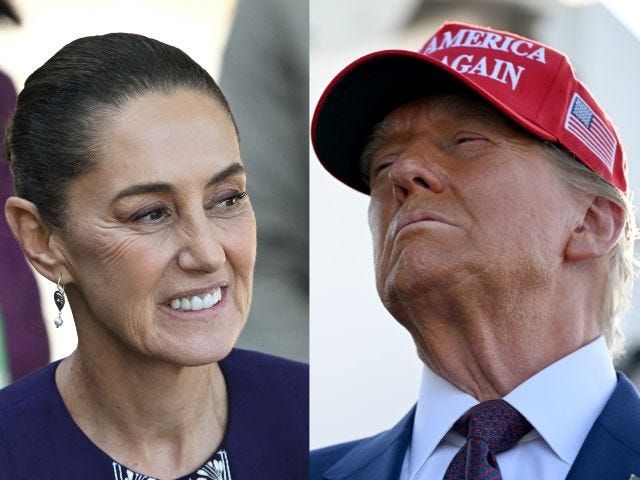Donald Trump has announced that he intends to impose a 25% tariff on all Mexican imports on his first day returning to the presidency, amid aggressive proposals to enhance trade barriers with Canada and China as well. This declaration set off a swift reaction from Mexico’s President Claudia Sheinbaum Pardo, who stated that her country would retaliate with its own tariffs. The tense exchange comes at a time when the US accounted for a staggering 82.7% of Mexico’s exports in the first quarter of 2024. Sheinbaum emphasized that such tariffs could jeopardize existing joint ventures, raising alarms about potential economic fallout. Notably, many major automotive manufacturers including General Motors, Stellantis, and Ford have significant operations in Mexico, with approximately 76% of the vehicles manufactured there being exported to the US.
On Monday, Trump utilized his Truth Social platform to disclose plans for an executive order that would establish tariffs on goods coming not only from Mexico but also Canada, and an additional 10% levy on imports from China. Highlighting a focus on illegal drugs, particularly Fentanyl, and illegal immigration, Trump asserted that these tariffs would remain until such issues are adequately addressed. During a subsequent press briefing, Sheinbaum warned that retaliatory tariffs could escalate quickly and might jeopardize mutually beneficial business relationships between US and Mexican enterprises. She pointed out that imposing taxes on pivotal companies would lead to inflationary pressures and job losses in both nations.
The immediate response in financial markets included a fall in the Mexican peso, which depreciated to its lowest value against the dollar since March 2022. Analysts like Gabriela Siller, who oversees economic assessments at Banco Base, suggested that Trump’s casual threat might compel him to act decisively, spurred by Mexico’s potential countermeasures. As the largest exporter to the US, Mexico’s economy heavily depends on trade with its northern neighbor, making their capacity to withstand threats from Trump somewhat limited. Predictions indicate that trade between the US and Mexico could see a dramatic increase, expected to grow by 300% in the next decade, reinforcing the interconnectedness of their economies.
Historically, Trump’s previous term initiated a wave of high tariffs on imported goods, including a 25% charge on steel and a 10% tax on aluminum from Mexico. After the tariffs were lifted in 2019, other threats followed to impose further tariffs unless Mexico curtailed illegal immigration significantly. Mexico retaliated towards such measures with tariffs on various US goods. The idea of imposing tariffs as a strategy to leverage negotiations has been a recurring theme in Trump’s approach to trade, with advisors suggesting that tariffs could be used tactically rather than implemented with the sole intent to restrict trade.
Experts have raised concerns that Trump’s aggressive tariff policies targeting both Mexico and China could exacerbate inflationary pressures in the US economy, which are already facing numerous challenges. Observers like Derek Scissors at the American Enterprise Institute warned that imposing tariffs on Mexico on top of existing pressures from China could significantly disrupt markets. Additionally, tariffs historically carry the risk of unsettling industries, particularly the auto sector, which is critically linked to cross-border investment and supply chains vital to both economies.
In conclusion, President Sheinbaum has advocated for constructive dialogue as the optimal route toward fostering understanding and cooperation between the US and Mexico, hoping for fruitful negotiations between their respective teams to avoid a trade war. The emerging situation underscores the delicate balance between addressing trade concerns linked to drug smuggling and illegal immigration and maintaining the economic health of both nations through cooperation rather than confrontation.

